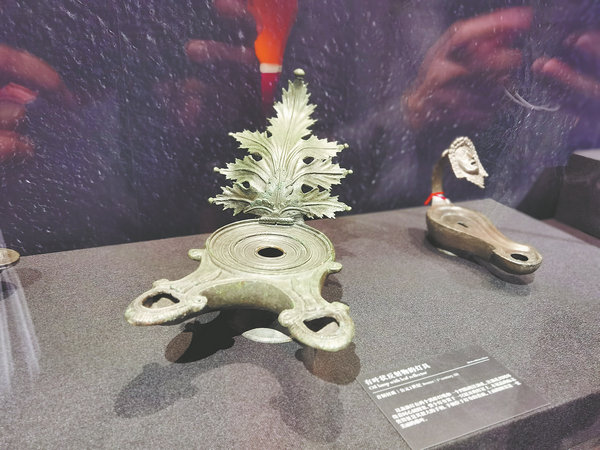

A bigger picture
The ongoing exhibition in Beijing is the second leg of its Chinese tour after its debut in Shenzhen, Guangdong province.
In July, a second exhibition, Masterpieces from the National Archaeological Museum of Naples, lifted its curtain at the China World Art Museum in Beijing, with a display of 69 artifacts. As one of the world's first museums to open to the public, it now leads a new wave of exchange between cultural heritage sectors in China and Italy.
"Museums should better benefit the development of local communities," Paolo Giulierini, director of the National Archaeological Museum of Naples, said at the 2023 Beijing Culture Forum last month. "Our museum tries to tell people that Western perspectives cannot be imposed. Instead, it can be a place for different cultures to exchange ideas. Mutual understanding of each other's cultures can build a more inclusive world."
Between 2018 and 2019, Mortals and Immortals: The Treasures of Sichuan in Ancient China toured Italy, highlighting the 3,000-year-old Sanxingdui Culture, known for its exotic-looking bronze ware, and other key ancient sites in the province. The National Archaeological Museum of Naples was its first Italian port of call.
Liu Shuguang, head of the Chinese Museums Association, who once worked on the archaeological site at Pompeii as a visiting scholar, said at the Beijing Culture Forum that the National Archaeological Museum of Naples and other smaller archaeological museums across the city and the Pompeii area can be a source of inspiration for Chinese cities.
He says that better links can be built between a city's overall development and the role of museums in promoting local history and culture.
According to Federico Antonelli, director of the Italian Institute of Culture in Beijing, collaboration between the Chinese and Italian cultural heritage sectors will benefit many fields.

Closer cooperation in cultural heritage conservation, more exchange exhibitions and joint archaeological work in places home to ancient civilizations could also be part of upcoming programs, given Italy's deep experience of international archaeology and China's rapid development in the field.
"We've seen cooperation between the two countries, and not only at the national level," Antonelli says. "It has expanded to many provincial-level institutions, and stone relic restoration in particular interests experts on both sides. The ongoing exhibition also showcases achievements in that area."
Since 2017, a Sino-Italian laboratory has been helping conserve the Dazu Rock Carvings, a UNESCO World Heritage Site in Chongqing. Separately, a bilateral symposium was held in Leshan, Sichuan province, in July on possible cooperation on the Leshan Giant Buddha, another World Heritage Site.
Near the exit of the exhibition at the National Museum of Classic Books, a plaster cast of a young woman is on display. She was discovered in Pompeii, and while her body was incinerated by the blast, its outline was preserved in the hot volcanic ash that covered her. She was found on the ground, quiet but powerful, and her presence touches the heart and moves the imagination.
The individual pieces of projects like this exhibition may also combine to create a grand picture of the historic exchange between China and Italy. Rising from the sands of time, examples of their respective ancient glories and vicissitudes, they point toward a bright horizon ahead.